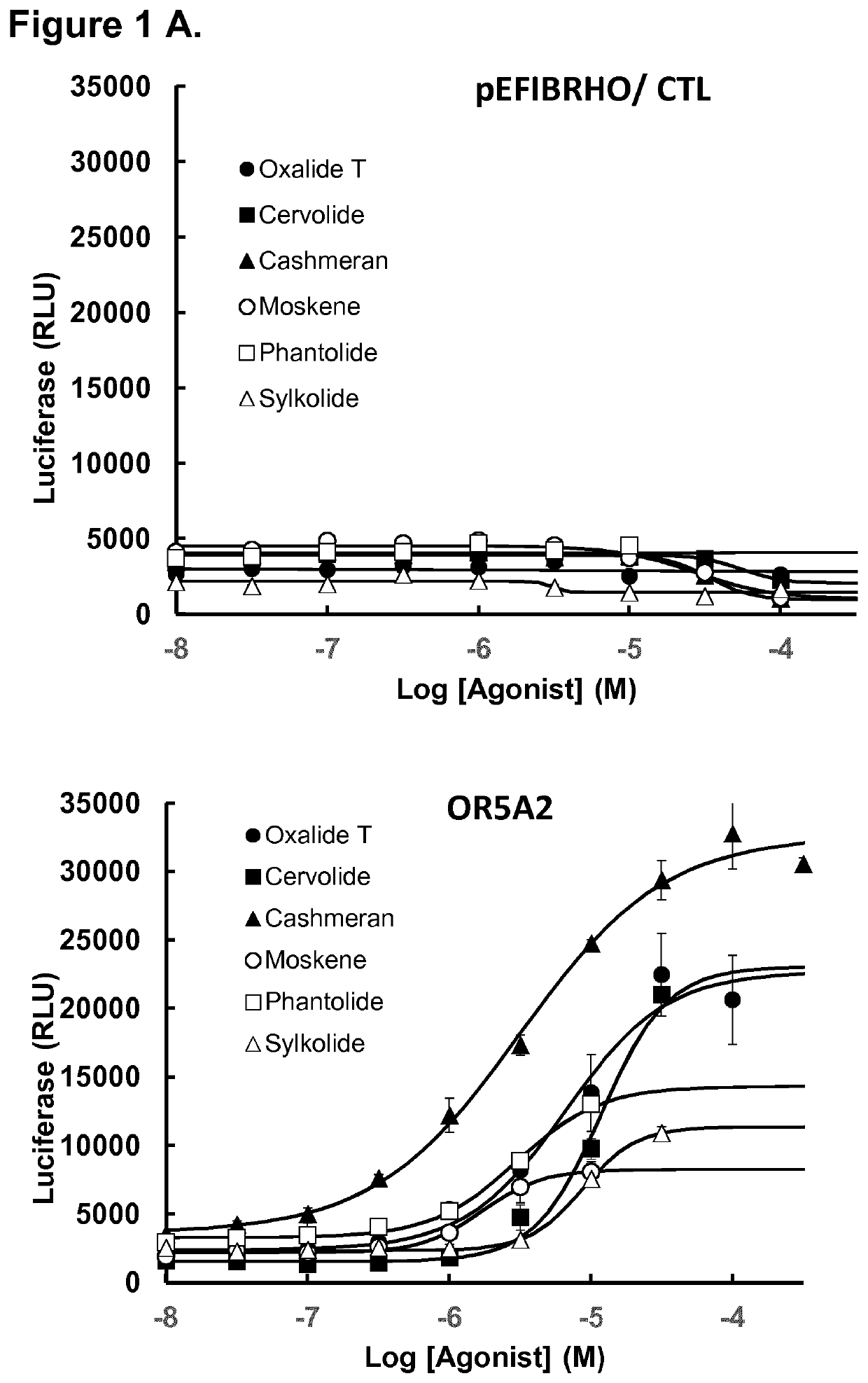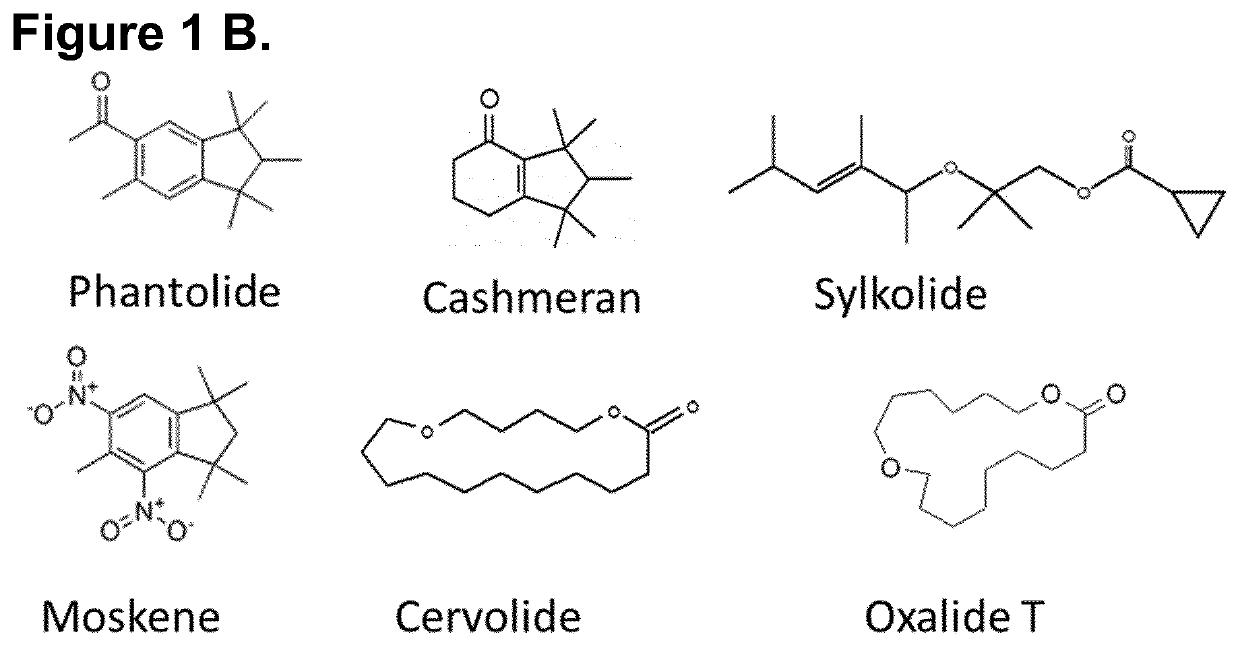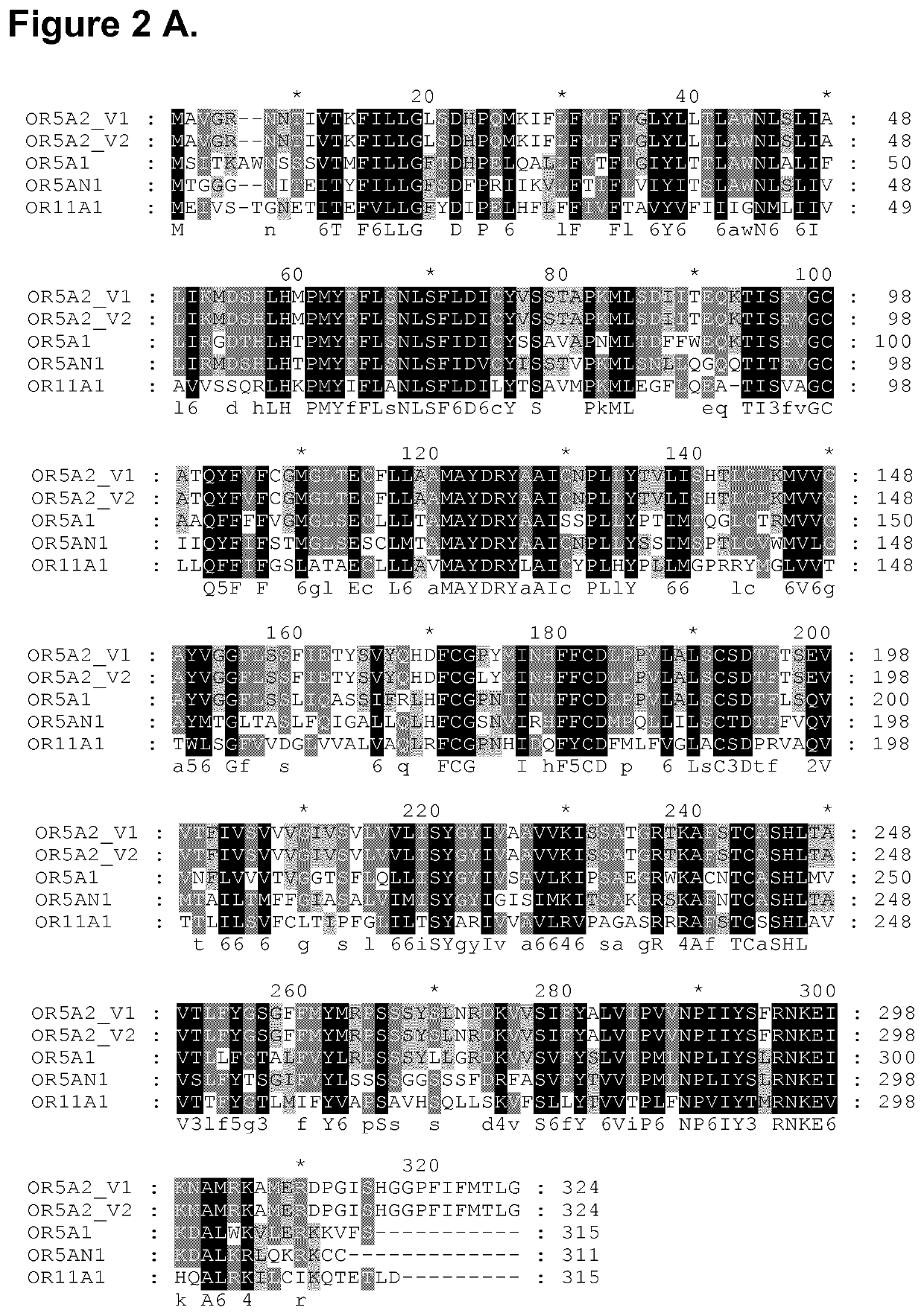Olfactory receptor involved in the perception of musk fragrance and the use thereof
a technology of musk fragrance and olfactory receptor, which is applied in the field of characterization of olfactory receptors, can solve the problems of musk tibetene and musk moskene production decline, particularly sensitive to weak responses of tests, and insufficient investigation of physiological functions of these species
- Summary
- Abstract
- Description
- Claims
- Application Information
AI Technical Summary
Benefits of technology
Problems solved by technology
Method used
Image
Examples
example 1
of Odorant Molecule Libraries
[0234]Odorant compound libraries containing musks and other types of compounds were used to identify activators of the OR of the invention. The deorphanisation campaign was performed on OR of the invention with a series of 891 odorant compounds. Musks from the four structurally different groups were included in the 891 tested odorants (Table1).
[0235]Each compound was tested at 3 different concentrations (1 mM, 316 μM, 100 μM). The different compounds of the tested libraries were disposed at the same concentration into 96 well plates (1 molecule / well) containing cells expressing the OR of the invention. The activity of the tested compounds was measured using the luciferase activity as explained above. The median luciferase activity induced by the tested compounds and the associated standard deviation were determined. Putatively active compounds (hits) were defined as compounds inducing a luciferase activity higher or equal to the median+2 standard deviati...
example 2
tion-Response Analyses of Musk Ligand-OR Interactions
[0237]In order to validate the aforementioned hits, concentration-response analyses using the luciferase-based reporter assay were achieved using semi-logarithmic serial dilutions of hit molecules, from 1 mM to 316 nM, on OR5A2_variant 1. In these analyses we also included ORs previously described as musk-specific receptors OR5AN1 (SEQ ID n° 7) (WO 2015 / 020158 A1, Shirasu et al. 2014 Neuron 81, 165-78, Sato-Akuhara N et al. 2016 J Neurosci. 36(16), 4482-91) and OR11A1 (SEQ ID n° 8) (WO 2016 / 201152 A1). By phylogenic analysis, we found that the most similar OR gene to OR5A2 was OR5A1 (SEQ ID n° 9) with 71% nucleic acid identity and 67% amino acid identity (FIGS. 2A-B). Therefore, OR5A1 was included in the analyses. 35 musk compounds from the four structurally different chemical groups previously described were tested in concentration-response analyses (Table 2). In each experiment, an empty vector was used as negative control (pEFI...
example 3
onses Analysis of OR11A1 and OR5A1 Specific Ligands −OR Interaction
[0241]Amino acids sequences alignment shows 67% identity between OR5A1 and OR5A2, 58% with OR5AN1 and 41% with OR11A1 (FIGS. 2 A-B). To further address the question of how well paralogy predicts functionality and selectivity, we compared the response of these ORs to beta-ionone and 2-ethyl fenchol, the two well-known agonists of OR5A1 and OR11A1 respectively (Jaeger et al., 2013; Adipietro et al., 2012). These compounds were tested in concentration-response analysis in luciferase assays, as described previously. In each experiment, an empty vector was used as negative control (pEFIBRHO). Representative concentration-response curves are given in FIGS. 3 A-B.
[0242]It was observed that OR5A1, the closest paralog of OR5A2, and OR11A1 are both activated by their own cognate agonist. On the contrary, in these experimental conditions, OR of the invention (namely OR5A2) as well as OR5AN1 are stimulated neither by beta-ionone...
PUM
 Login to View More
Login to View More Abstract
Description
Claims
Application Information
 Login to View More
Login to View More - R&D
- Intellectual Property
- Life Sciences
- Materials
- Tech Scout
- Unparalleled Data Quality
- Higher Quality Content
- 60% Fewer Hallucinations
Browse by: Latest US Patents, China's latest patents, Technical Efficacy Thesaurus, Application Domain, Technology Topic, Popular Technical Reports.
© 2025 PatSnap. All rights reserved.Legal|Privacy policy|Modern Slavery Act Transparency Statement|Sitemap|About US| Contact US: help@patsnap.com



